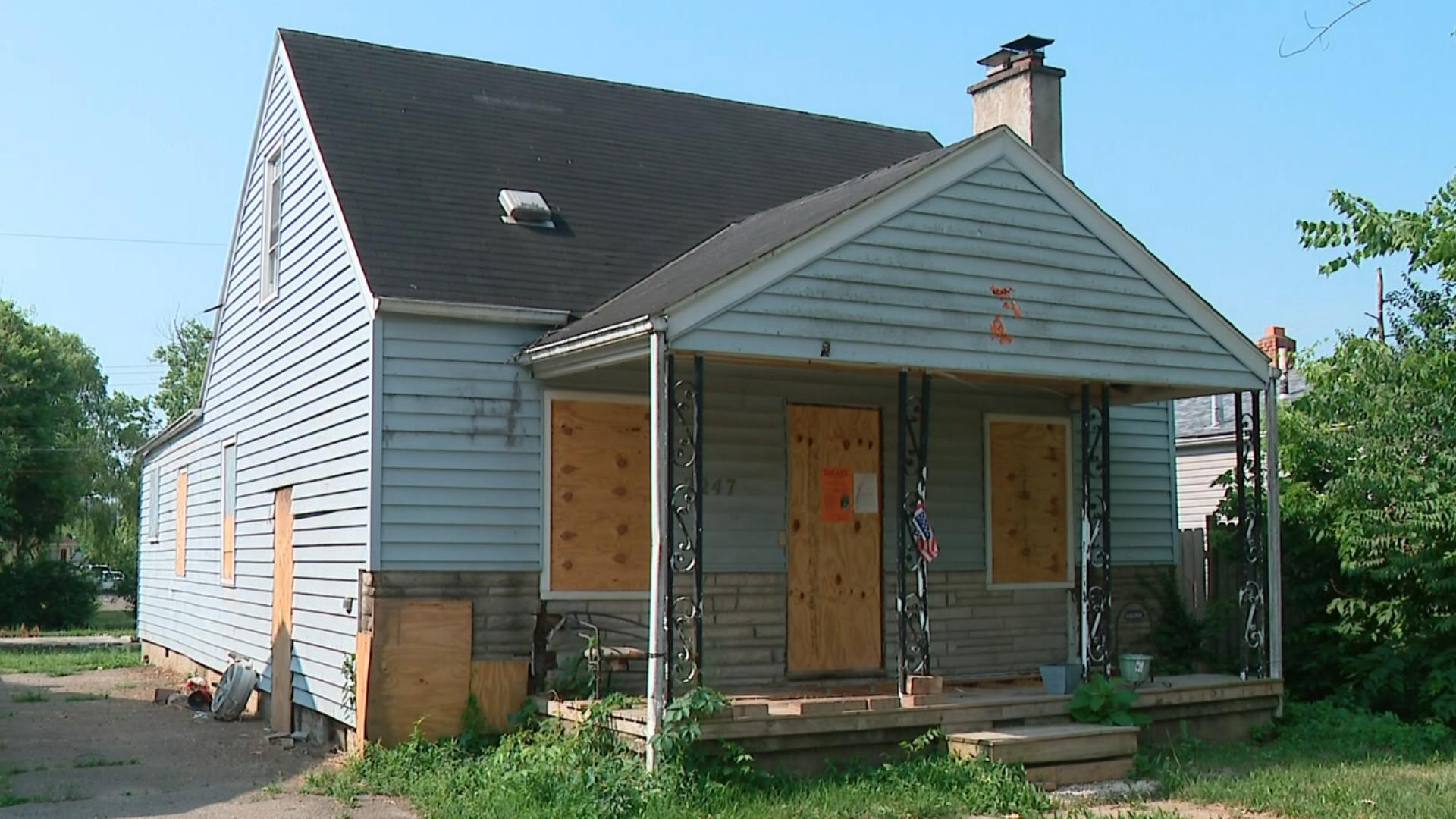COLUMBUS, Ohio — The people living on Safford Avenue in the Hilltop neighborhood are fed up with a vacant house on the block and the squatter who keeps breaking into it.
“No matter how many times they came and boarded the house up, he just wouldn’t leave,” said a neighbor named Adrianne.
Anthony Celebrezze, the deputy director of Building and Zoning, said the vacant home came onto Columbus Code Enforcement’s radar after it caught fire in 2023. Celebrezze said it’s not illegal for the home to be vacant, but it must be secured and boarded to code.
“That’s for your own protection because when you’re not around a structure like this, someone’s going to come in and remove the plumbing, the wiring and cause a general mess,” Celebrezze said.
A mess is exactly what neighbors say their experience living next to the home has been.
“We’re tired of it. There’s trash all the time. There’s trash this high inside of the home,” a neighbor said. He declined to share his name.
People have called 911 about the vacant home 29 times between November 2023 and May 2024. They’ve often reported a squatter who keeps returning to the property.
Columbus police have arrested that squatter five times for breaking into the property. 10 Investigates is not naming him because the squatter has been charged with misdemeanors connected to the home.
“We don’t need that disturbance,” a neighbor said. “The firetrucks, the cops. I bet the cops have been over here 20 times. Code Enforcement has been over here 20 times.”
The property is owned by Otis Ray and his sister who inherited it from their parents. Neighbors say they’ve called Ray multiple times for help with no luck. Columbus Code Enforcement officers have been in touch with him, but he hasn’t remedied the violations on the property.
“I have spoken with the owner before and explained to him all of the violations and what needs to be done, but we haven’t had any movement on getting those things addressed,” Columbus Code Enforcement Area 2 Supervisor Cory James said.
Area 2 includes the Hilltop, which is where this vacant home is located.
The city can take a property owner to environmental court if they do not fix code violations. The city attorney’s office reopened a case against Ray and his sister in court and scheduled a contempt hearing for July 9. That hearing was continued and rescheduled for July 31.
10 Investigates was at the July 9 hearing and spoke with Ray in the courthouse. He declined a formal interview but blamed the squatter for the home’s condition.
“There’s no trouble keeping it up. The squatters, the people – I don’t want to talk. This stuff pisses me off,” he said.
As of Jan. 4, there were more than 2,800 vacant properties in Columbus, according to data collected by Code Enforcement. James said that number has trended down over the last five years.
10 Investigates analyzed the data and created a heat map that shows where vacant properties are in Columbus. Our investigation found that they are in neighborhoods across the city, but are especially dense in the Hilltop and Franklinton.
Map Key: Blue = Good; Green = Fair; Orange = Poor
Celebrezze said the density may be explained by the structure of the neighborhoods, which were developed after World War II when land parcels and houses were smaller and more concentrated. He also said those neighborhoods are historically underserved.
“Unfortunately, they’ve been disadvantaged, low-income areas and those tend to have the challenges of people not being able to maintain their house,” he said.
What should you do if the house next door becomes a squatter’s paradise? James and Celebreeze say the first step is to report it to Code Enforcement by calling 311 or using the app.
“Within a few days, they would send out an inspector. They would inspect it and we would engage with a property owner,” Celebreeze said. “All of our violations have some sort of deadline for you to make the repairs.”
James says Code Enforcement’s goal is always to work with a property owner to get their home into compliance, which includes fixing violations and properly boarding up doors and windows. When property owners do not comply, they may be taken to environmental court where a judge can impose fines or receivership of the house.
On Monday, Columbus City Council also approved two pieces of legislation to create a Vacant Building Registry and a Foreclosed Property Registry, which would ensure that those properties are protected and maintained.
The people who live next to the vacant home on Safford Avenue say they’re grateful for the city’s help, but they’d be happiest if the owners decided to sell.
“If they’re not going to sell this house to somebody that’ll buy it, tear it down just make it an empty lot,” Adrianne said.

